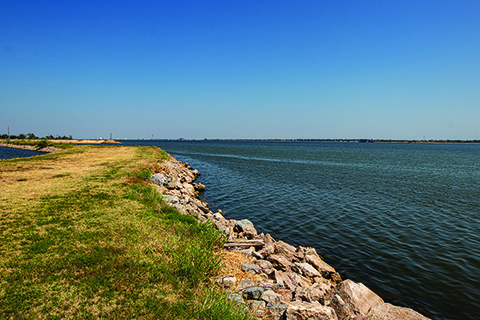Oklahoma weather proves global weather impacts state
El Nino event could be in the state’s future as Pacific waters get warmer

As temperatures rose this summer in Oklahoma, many factors contributed to the harsh heat faced throughout the latter month of the season. Those factors included the heating and cooling of the Eastern Pacific, the rainfall and water levels, as well as the heat dome.
“It’s a naturally occurring change in sea pressure and air temperature,” said Oklahoma state climatologist Gary McManus. This is in reference to the events known as La Niña and El Niño, two weather phenomena that take place in the Eastern Pacific.
La Niña events cause a shift in the jet stream which create warm and dry conditions across the southern United States, whereas El Niño events cause cool and wet conditions across the southern states.
As the summer months began, the earth was in the cold phase of La Niña, causing Oklahoma to experience a drier, warmer climate, combined with the “heat dome,” which is caused by the air compressing towards the ground and heating up due to the high density, and that’s what led to the extreme heat faced throughout the latter part of the summer.
“By mid-century Oklahoma can expect a temperature increase of two-to-five degrees,” said KFOR meteorologist Emily Sutton.
The increase in temperature isn’t the only thing Oklahoma is facing. There has also been an increase in rainfall.
In early July, Oklahoma experienced the fifth wettest July on record, shown by water levels at Lake Hefner, which grew from a gage height of 1,196.70 feet on July 4, 2023 to a gage height of 1,200.26 feet by July 19. The water levels have remained consistently high since, showing that Oklahoma rainfall is heavier than normal.
“This is going to impact our agriculture, our economy and our infrastructure,” said Sutton.
Oklahoma is likely to experience more intense storms, followed by stages of flash droughts throughout the next few years due to this shift in climate, Sutton said.
McManus said, when asked about the impact of climate on infrastructure, “Oklahoma deals with a wide range of extreme weather, so we should be able to handle an El Niño event.”
Should an El Niño event occur, Oklahomans can expect larger amounts of rainfall, as well as cooler conditions, but should another heat dome happen, there may be flash droughts and extreme heats following the harsher storms.

